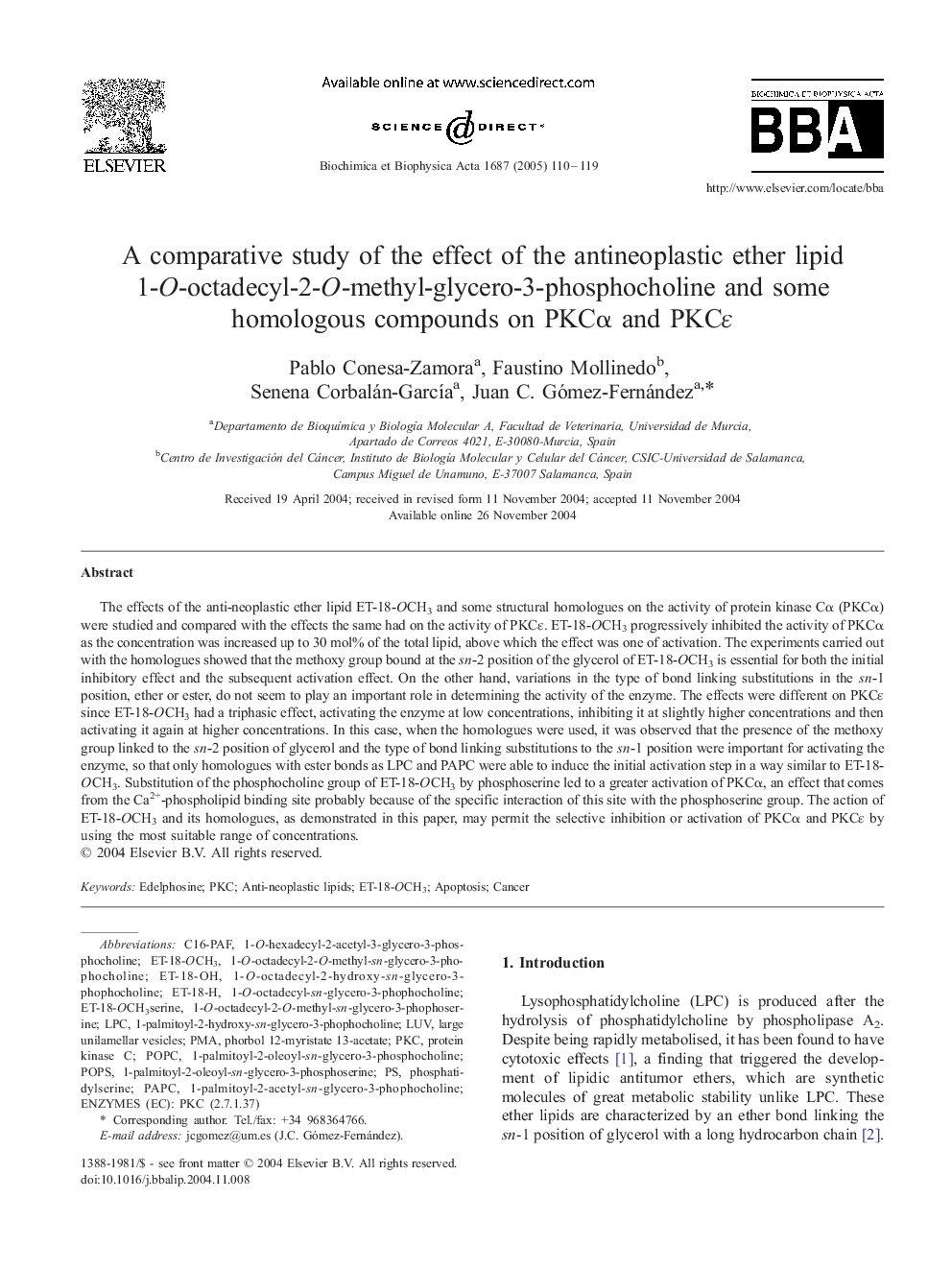| Article ID | Journal | Published Year | Pages | File Type |
|---|---|---|---|---|
| 9886620 | Biochimica et Biophysica Acta (BBA) - Molecular and Cell Biology of Lipids | 2005 | 10 Pages |
Abstract
The effects of the anti-neoplastic ether lipid ET-18-OCH3 and some structural homologues on the activity of protein kinase Cα (PKCα) were studied and compared with the effects the same had on the activity of PKCÉ. ET-18-OCH3 progressively inhibited the activity of PKCα as the concentration was increased up to 30 mol% of the total lipid, above which the effect was one of activation. The experiments carried out with the homologues showed that the methoxy group bound at the sn-2 position of the glycerol of ET-18-OCH3 is essential for both the initial inhibitory effect and the subsequent activation effect. On the other hand, variations in the type of bond linking substitutions in the sn-1 position, ether or ester, do not seem to play an important role in determining the activity of the enzyme. The effects were different on PKCÉ since ET-18-OCH3 had a triphasic effect, activating the enzyme at low concentrations, inhibiting it at slightly higher concentrations and then activating it again at higher concentrations. In this case, when the homologues were used, it was observed that the presence of the methoxy group linked to the sn-2 position of glycerol and the type of bond linking substitutions to the sn-1 position were important for activating the enzyme, so that only homologues with ester bonds as LPC and PAPC were able to induce the initial activation step in a way similar to ET-18-OCH3. Substitution of the phosphocholine group of ET-18-OCH3 by phosphoserine led to a greater activation of PKCα, an effect that comes from the Ca2+-phospholipid binding site probably because of the specific interaction of this site with the phosphoserine group. The action of ET-18-OCH3 and its homologues, as demonstrated in this paper, may permit the selective inhibition or activation of PKCα and PKCÉ by using the most suitable range of concentrations.
Keywords
Related Topics
Life Sciences
Biochemistry, Genetics and Molecular Biology
Biochemistry
Authors
Pablo Conesa-Zamora, Faustino Mollinedo, Senena Corbalán-GarcÃa, Juan C. Gómez-Fernández,
